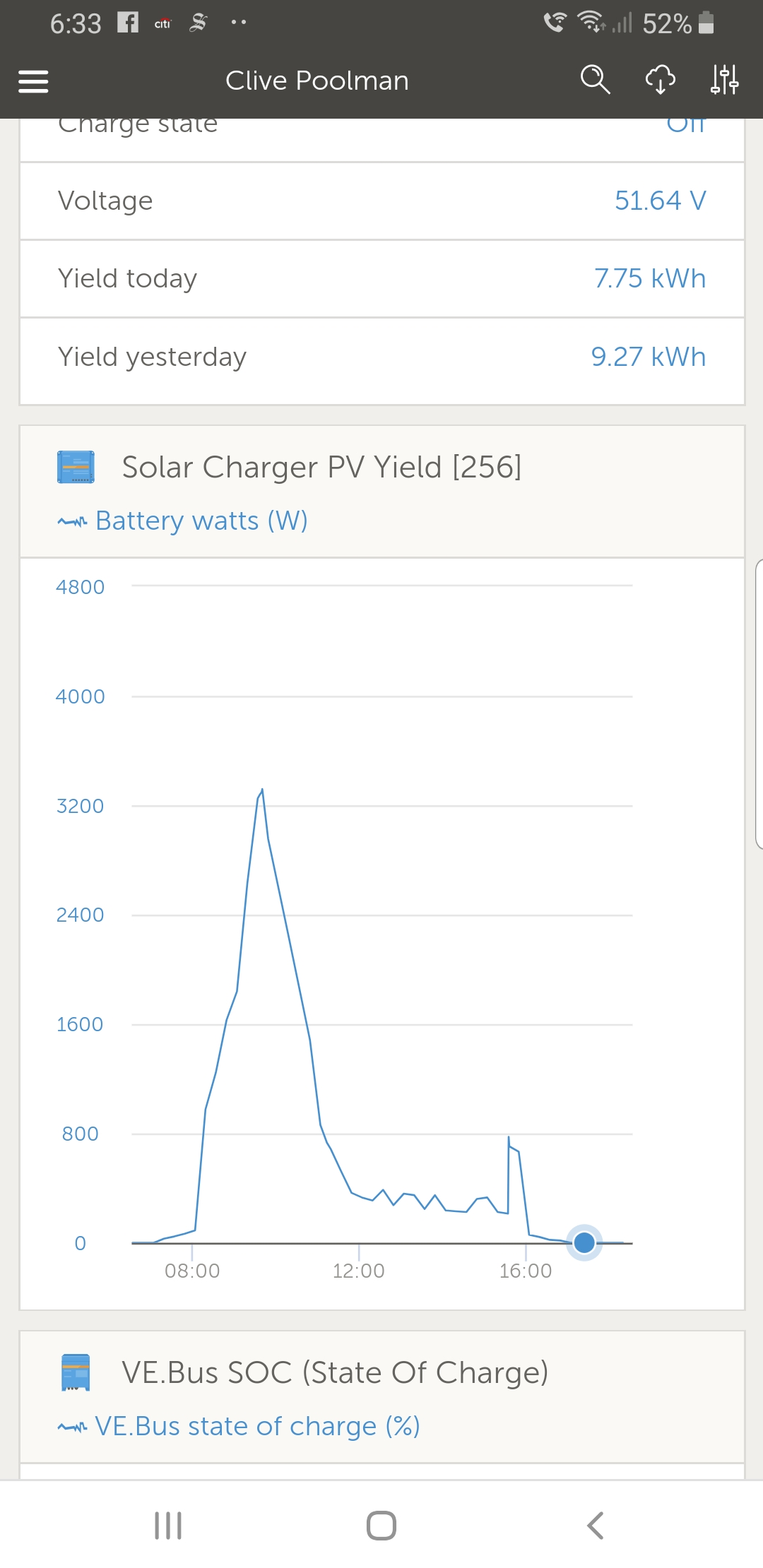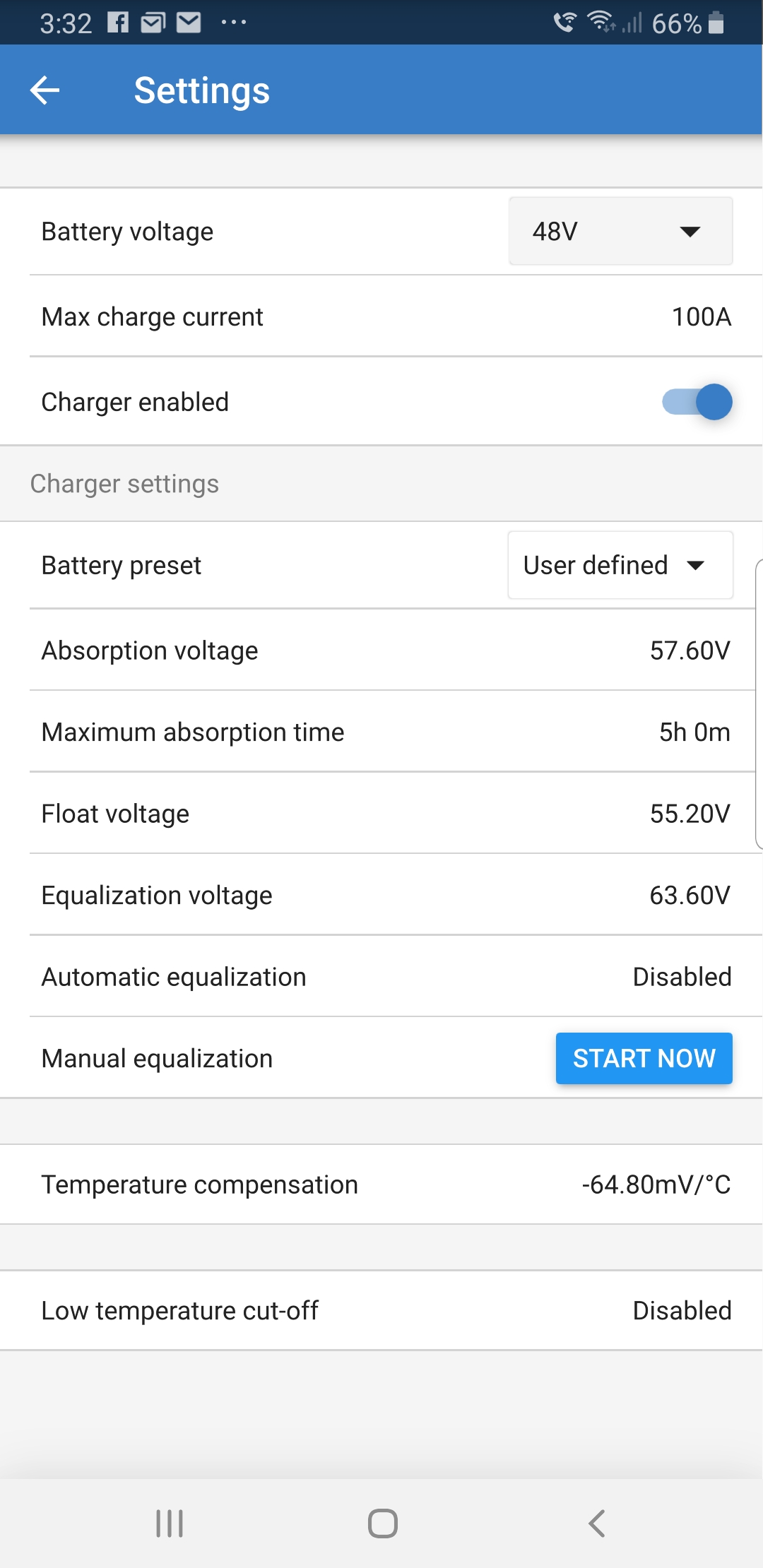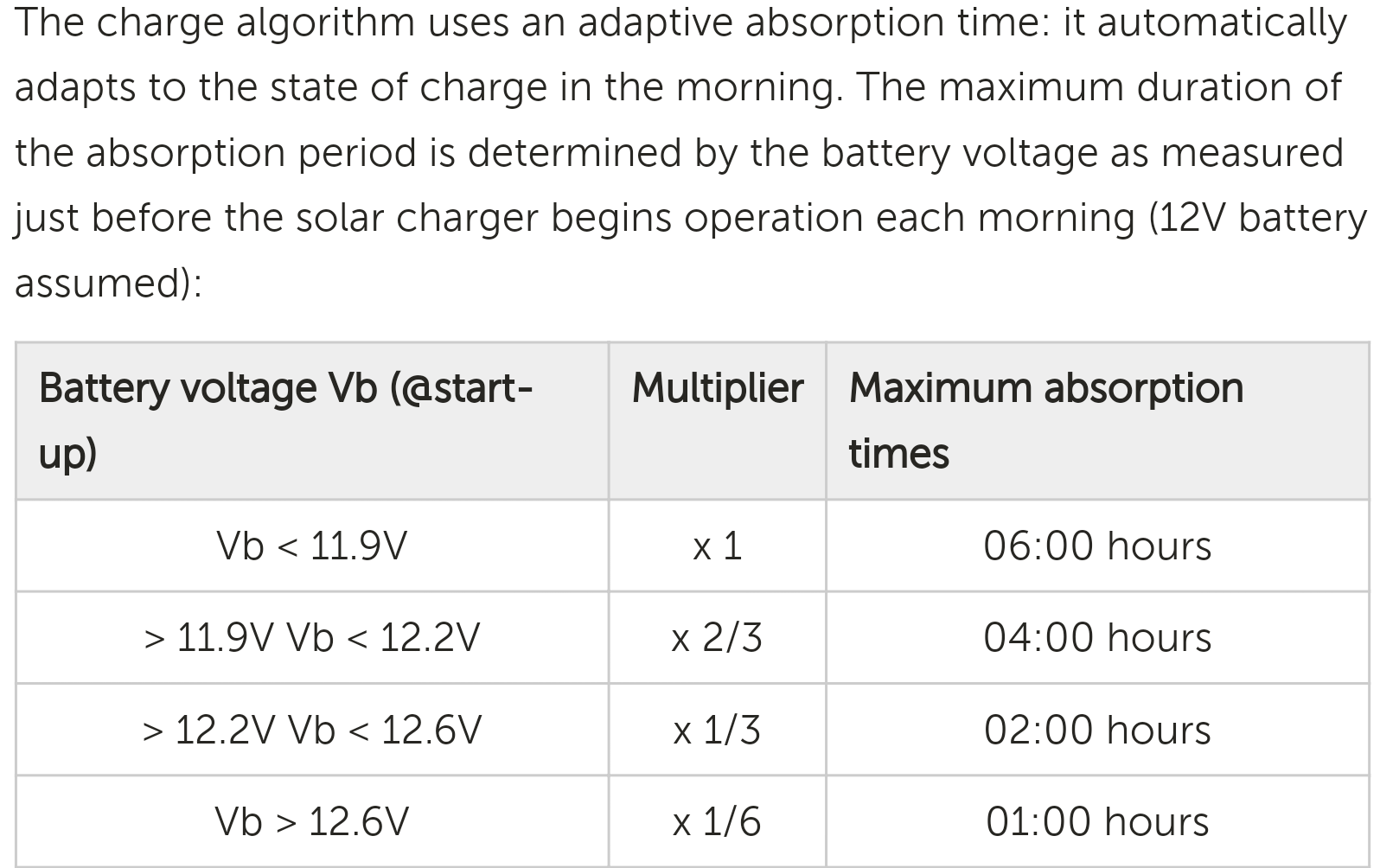Hi
I have a 2 week old installation of OzPv gel batteries charged by a Victron MPPT 250/100, a Multiplus 5000Va inverter and ColourGX. I get no battery SOC even tho the MPPT knows when to move to absorb'float etc during daytime and the Multiplus knows how much charge taken from the batteries. Is there a setting for CGX to display SOC or do I need more hardware?
Thanks. You guys do a great job!
Clve






